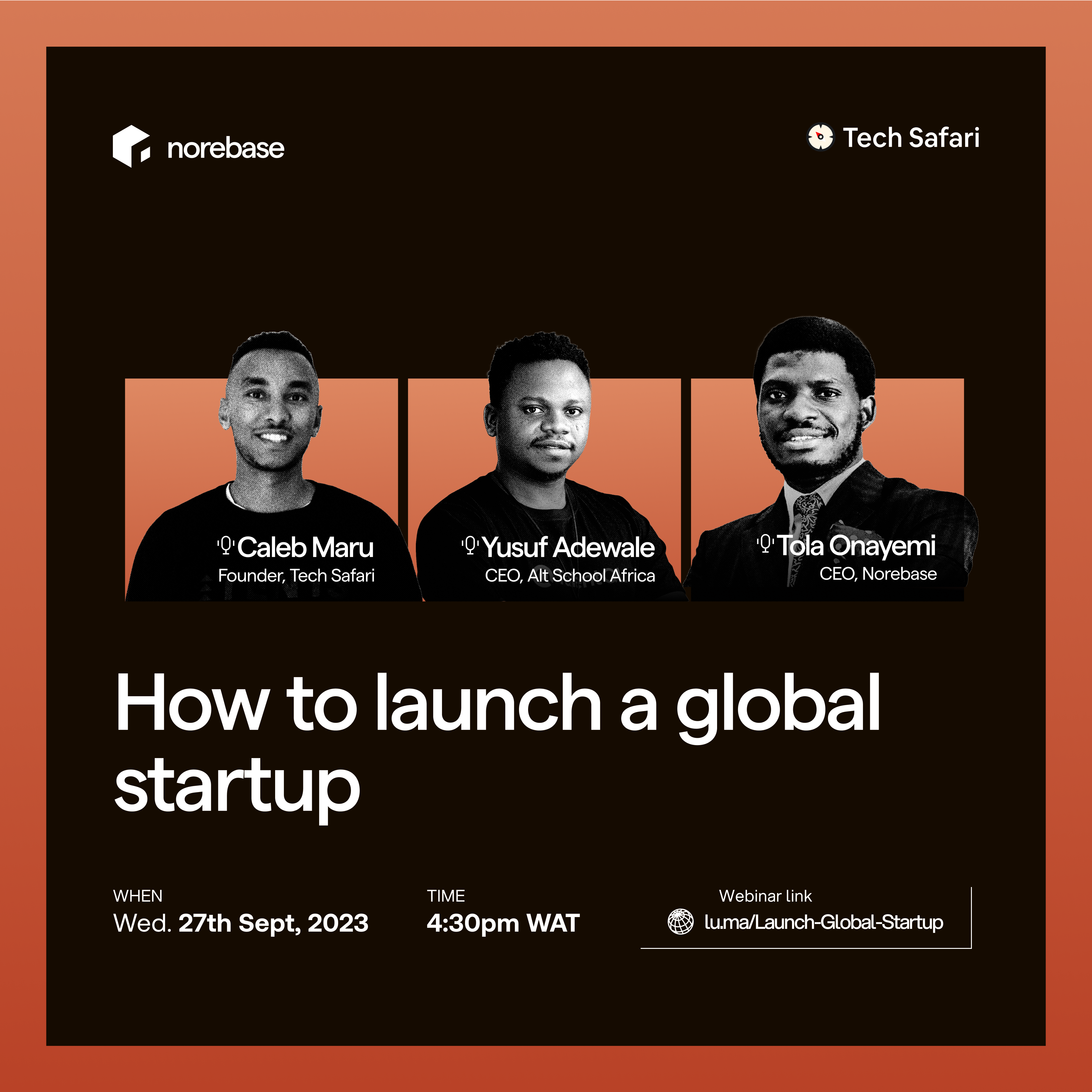What does it mean to launch a global startup—getting global from day one, or building systems to help you scale when the time comes? Does it have to be one or the other, or can you do both?
This article highlights gems from a webinar co-hosted by Norebase and TechSafari. You’ll get answers to practical questions about launching and scaling from founders who’ve pretty much seen it all globally. Let’s dive in!
What does it mean to be a global company?
What does it mean to be a global company and how is that different from launching a company in one market?
Adewale:
Think global from day one. But don’t let the weight of the vision cripple you.
For instance, when building AltSchool, we prioritized the integration of multiple payment platforms that allowed us to receive money from multiple countries. We had Paystack and Flutterwave. The first month after we launched, we had over 5,000 people who paid us $20 each from 17 countries.
By the end of the campaign, we had over 9,000 people who had enrolled to learn.
Tola:
It all starts with having a product in demand globally. Then you proceed to design systems that can support the global vision because progress happens by design.
What kind of systems make a global company successful?
Adewale:
Solve for communication across borders. Accents, languages, cultural nuances. We solved this by aggregating people from different countries into clusters. That way, people felt comfortable hearing people who sounded like them. We also had legs on the ground. It was important for us to learn the culture and context of the locals.
Additionally, we prioritized using English because it is the most spoken language and therefore has the widest reach.
Secondly, evolve your systems as you scale. We started with Paystack and Flutterwave, but we now have Stripe which lets us accept payments from around the world in dollars. Considering that we have students from 85 countries, this seemed like the best move.
Lastly, know how to plan your entry into a new country in light of revenue potential. Always weigh your customer acquisition cost (CAC) and your margin before deciding to enter a new market.
For instance, the CAC for the US, Canada, and the UK is quite high for us. We’ve therefore targeted countries with low CACs and high margins.
Tola:
In building systems that can serve a global audience think of payments first. For this, I’d advise getting a US company and a US bank account so that you can accept payments in dollars from anyone.
Next is distribution. How do people find your product globally?
Messaging is another important point. Is your messaging something that the global audience can relate to? There are things Nigerians care about and things Kenyans care about.
For instance, when we changed our messaging for one of our products from “Get a US company and get a bank account”, to “Incorporate a US company with Norebase and get a bank account, registered address, and EIN all for $450”, we noticed more people gravitated towards the latter.
Lastly, remember that when you’re not building a global startup you can focus on a region and use one type of messaging, but when you’re building a global startup, you have to accommodate the nuances of different regions.
Final Thoughts: On Launching, expanding, and doubling down
Adewale: Not every startup needs to be a global startup from day one. Understand your advantage and work hard to optimize it. For instance, a fintech can’t launch as a global startup from day one. There are regulatory hurdles that will stifle your growth.
Position for funding. Whether or not you’re launching a global startup, you should position your company for funding. That means incorporating in the US. Many Limited Partners in both African and foreign Venture funds are only comfortable with investing in US or UK domiciled companies.
No matter the stage you are in your company, data will save you. We thought we were building an online university, but data informed us that we were building something else.
Finally, respect every market.
Tola: Chase the elephant but put honey out for the ants. That is, find where your biggest earners are and actively hunt them. But create systems to ensure other customer personas can self serve.
Get local context. We once ran Google ads targeting the Kenyan market. We had really impressive traffic numbers, but little to no payments. We eventually found out that Kenyans pay via M-Pesa. So we had a lot of customers dropping off because Kenyans weren’t comfortable paying with the payment methods we had.
Finally, Launch in a market where you have the most context about culture and regulations. Expand into markets where you have low CAC and high margins
Double down on markets with demand and increased activity. Be sure to judge demand based on paying customers, not clicks, not leads but paying customers.
Here’s a link to watch the replay of the webinar.
Become a global company with Norebase; get started by registering your company in the US here.
To register a trademark, click here



